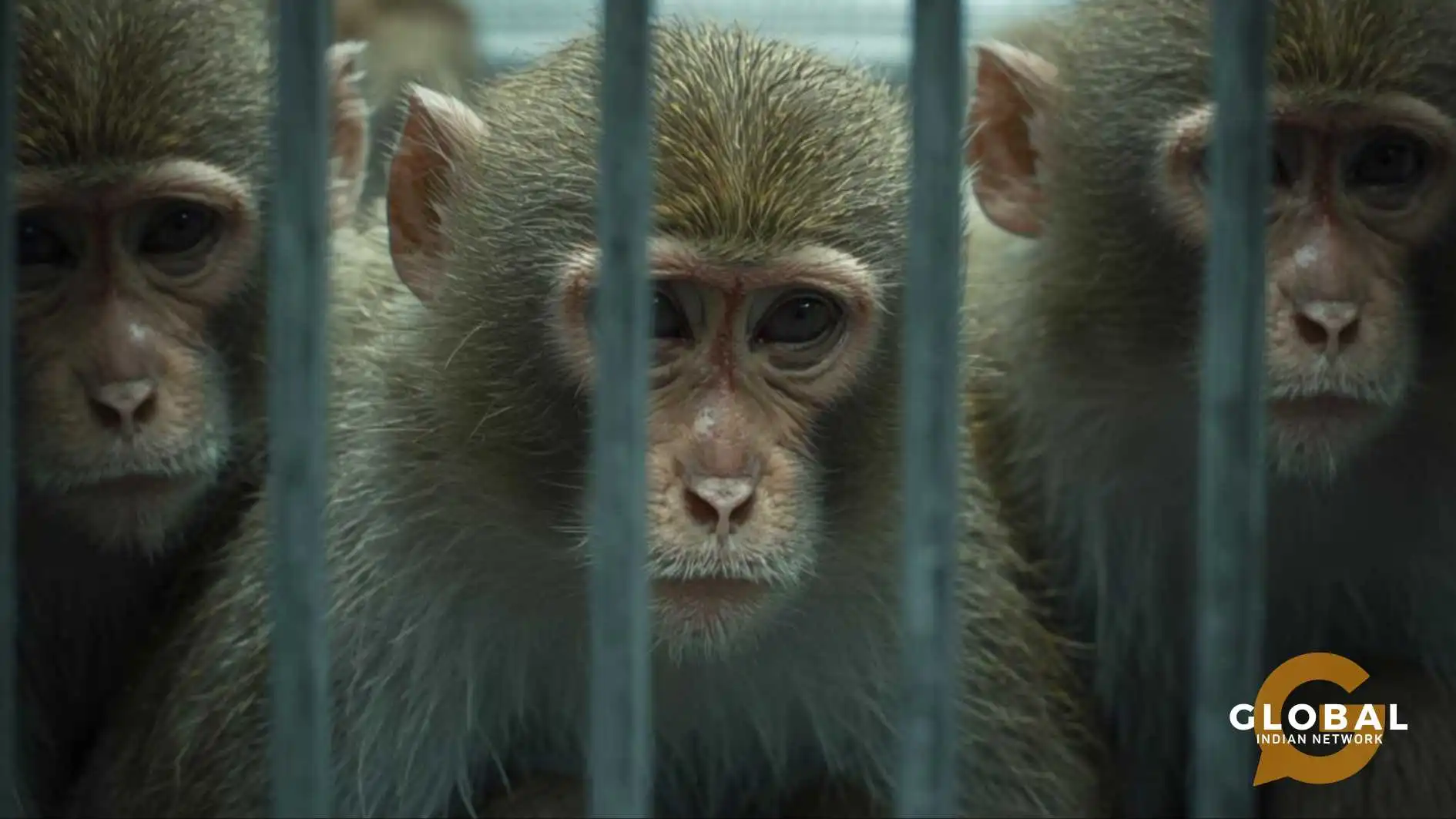The animals used in experimental pharmacology have been crucial for scientific and medical advances. However, it also brings up important ethical concerns about the well-being of these sentient beings. Understanding the impact of animals in experimental pharmacology helps us manage the conflict between scientific progress and moral responsibility. This issue is particularly significant for the global Indian community, given India’s growing role in pharmaceutical research and animal testing globally.
Table of Contents
Animals Used in Experimental Pharmacology and Ethical Concerns
Animals are used in experimental pharmacology as models to determine the safety and effectiveness of drugs and treatments. Researchers adhere to ethical guidelines like the 3Rs, which include Replacement, Reduction, and Refinement, in order to minimise harm to animals by substituting animal tests with other tests, like the 3Rs. Most recently, the principle of Responsibility has been introduced, which means that it is a moral obligation to uphold animal welfare during the research process. The researchers are supposed to administer proper care, anaesthesia, and reduce the pain, as their protocols should be checked by ethics committees beforehand.
India adheres to the regulations on animal welfare on a national level in accordance with international standards. Ethical compliance is supervised by bodies such as the Committee for Control and Supervision of Experiments on Animals (CPCSEA). Nevertheless, there are still issues of how to balance the research requirements and humane treatment, and thus, the only way to address these issues is by constantly improving and innovating the ethical practices.

Scientific Importance of Animals in Pharmacology
Animals used in experimental pharmacology are very useful in the study of disease mechanisms, drug toxicity, and new drug discovery. Animal models are also important to preclinical testing as they offer biological complexity, which, as of now, cannot be completely replicated by artificial systems. Before human trials, regulatory bodies around the world, including the Indian ones, demand that animal data be available to guarantee the safety and effectiveness of new medicines. This regulatory framework supports the pharmaceutical industry‘s responsibilities towards patient safety.
Ethical Guidelines and Practices
Ethical standards established worldwide require thorough planning and rationalization of animal research. The 4Rs, which are Reduction, Refinement, Replacement, and Responsibility, are popular concepts. Scientists have to evaluate the benefits of the scientific and social value with animal suffering that could occur, document animal care, and train all staff who will work with animals. Invasive procedures require to be anesthetized and receive analgesia, and research protocols must clearly state how distress can be suppressed. These standards are enforced by ethical review boards and Institutional Animal Care and Use Committees (IACUC).
Innovations and Alternatives to Animal Testing
Motivated by the ethical issues and scientific progress, scientists tend to find alternative ways of decreasing the animals used in experimental pharmacology. The alternative technologies that can be used include organ-on-a-chip models, 3D tissue cultures, and advanced computer simulations, which can prove to be promising. The pharmaceutical sector in India is already adopting these new trends and thus can be seen as a possible pioneer in the ethical and progressive research practices. Shifting to these options will conform to the Indian values of scientific and caring concepts across the world.
The Global Indian Community’s Role and Perspective
The Indian community in the world, including scientists, policymakers, and advocates, is in a special vantage to determine the future of ethical pharmacology. The major participation of India in pharmaceutical production and research requires adherence to the standards of animal welfare in the international arena. These involve sponsoring policies that promote the implementation of non-animal systems and enforceable policies to protect animal dignity in research. Through encouraging options and moral actions, the global Indian society sets the pace of balancing innovations with people-friendly values.
Balancing Progress with Moral Responsibility
The future of experimental pharmacology is in the harmonization of scientific advancement and the consideration of animal life. Continuous improvement in research technology has provided a feasible means of minimizing animal testing without affecting safety. The Indian scientific fraternity and other stakeholders in the world must create a culture of responsibility and compassion in research. The highest moral principles are not only beneficial in terms of animal welfare but also guarantee credibility and trust of the populace in pharmaceutical innovations.

Religious and Ethical Paradoxes
Among the global Indian community, particularly in countries like Mauritius, where over 48% of the population identifies as Hindu, the debate around animals used in experimental pharmacology carries a deep moral undertone. Hindu philosophy upholds ahimsa (non-violence) and reveres several animals as sacred: monkeys symbolizing devotion through Lord Hanuman, cows representing motherhood and abundance, and elephants as embodiments of wisdom in Lord Ganesha.
Yet, Mauritius remains one of the largest exporters of long-tailed macaques , primarily to laboratories in the United States, France, and the United Kingdom, where they are used for drug testing, toxicity studies, and neurological research.
This contrast raises uncomfortable questions: how can a society that worships an animal simultaneously sanction its use in painful scientific trials? The issue isn’t about science versus spirituality, but about reconciling values with modern progress. For the global Indian community, addressing this duality is crucial, not just to uphold ethical consistency but to lead by example in promoting compassion-driven innovation that reflects both cultural integrity and scientific advancement.
The irony deepens when one considers the conditions these animals endure. Reports from global watchdogs like PETA and Cruelty Free International reveal overcrowded cages, a lack of enrichment, and psychological distress inflicted upon primates, dogs, rabbits, and rodents used in such research. Many are wild-caught or bred in captivity under questionable conditions, and cases of illegal wildlife trade and smuggling have been documented in the supply chain of laboratory animals, especially primates.
Beyond the moral cost, there are ecological repercussions. The capture and export of monkeys, for instance, disrupt natural populations and accelerate biodiversity loss in fragile island ecosystems like Mauritius. Removing these species from the wild not only affects ecological balance but also threatens already vulnerable native species through habitat degradation and population imbalance.
For a community that venerates these very creatures, this paradox invites reflection: can a society rooted in compassion continue to overlook the suffering that fuels its scientific advancement? Addressing these contradictions is not merely a matter of ethics; it is about aligning religious values, environmental responsibility, and global scientific leadership. The global Indian community, with its cultural heritage of empathy and moral inquiry, stands uniquely positioned to champion ethical, sustainable, and humane research practices that honor both life and progress.
Conclusion
Animals used in experimental pharmacology have been vital in the field of medicine, but this has been at a hidden cost of animal suffering. The increasing impact of the Indian community across the world in pharmaceutical research presents an opportunity and a challenge to spearhead compassionate science. Adoption of ethical standards and new options will enable India to produce state-of-the-art medical solutions without violating our ethical duty. By doing this, we are maintaining a vision of progress that is cognizant of the health of the human and the welfare of the animal.

FAQs
Why are animals used in experimental pharmacology?
Animals are used in experimental pharmacology to understand how drugs impact biological systems. This ensures safety and effectiveness before human trials. Animal models provide complexity that current alternative methods cannot fully replicate. They play a crucial role in discovering life-saving medicines.
What are the most common animals used in experimental pharmacology?
The animals used in experimental pharmacology are mice, rats, rabbits, guinea pigs, and sometimes dogs and non-human primates. Researchers pick these species for their biological similarities to humans or their suitability for certain studies, like testing for toxicity and effectiveness.
How do the animals used in experimental pharmacology impact the global Indian community?
The Indian community in pharmaceutical research has to balance scientific progress and ethical issues. As India plays a bigger role in global drug development, it is important to embrace humane research standards and support technology that cuts down on animal use. Focusing on ethical practices improves India’s reputation in global pharmaceutical research.
What are the key laws and guidelines regulating animals used in experimental pharmacology research?
Worldwide, including in India, laws regulate the animals used in experimental pharmacology. These laws enforce ethical standards and the 3Rs. In India, CPCSEA oversees regulations to ensure animal welfare and compliance with international ethical practices. The European Union and the USA also have strict guidelines for humane animal use.









